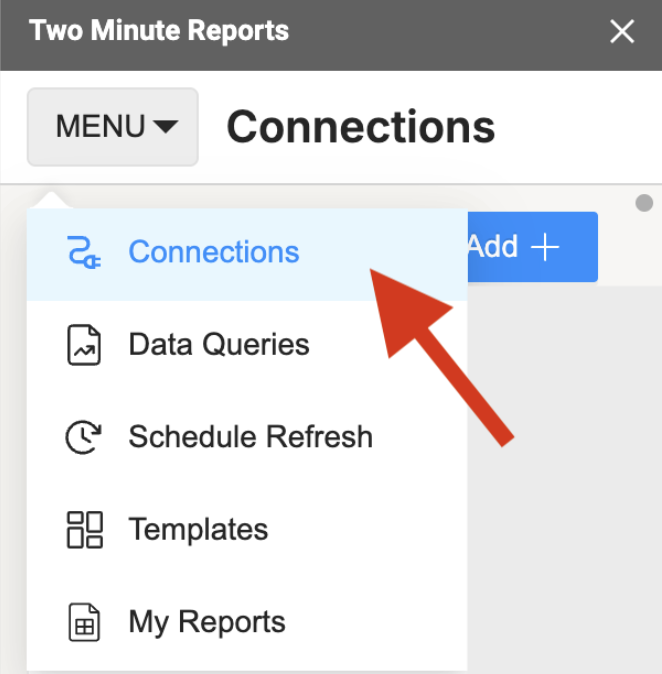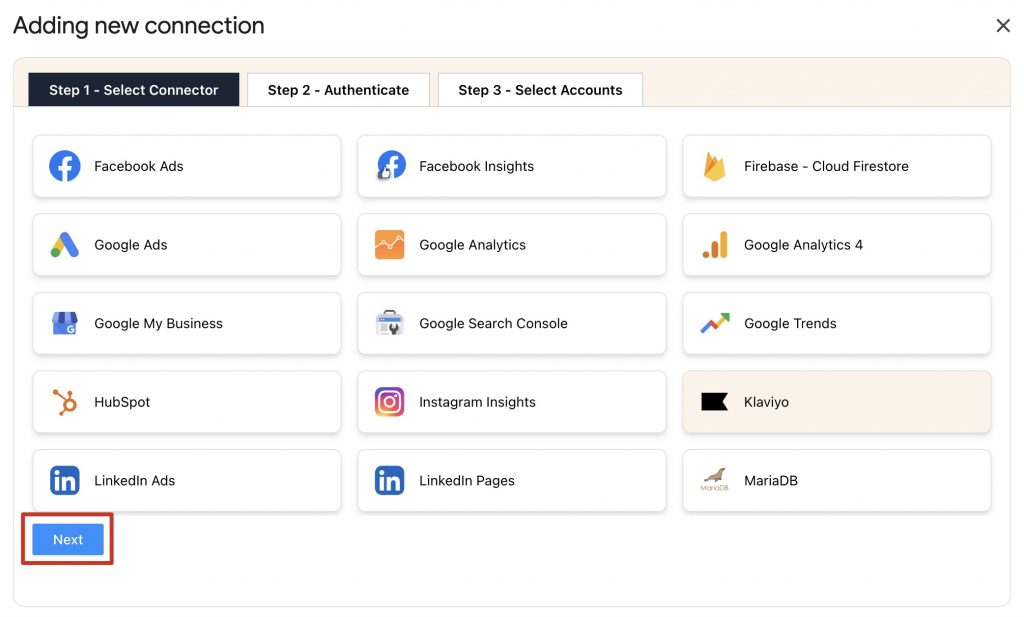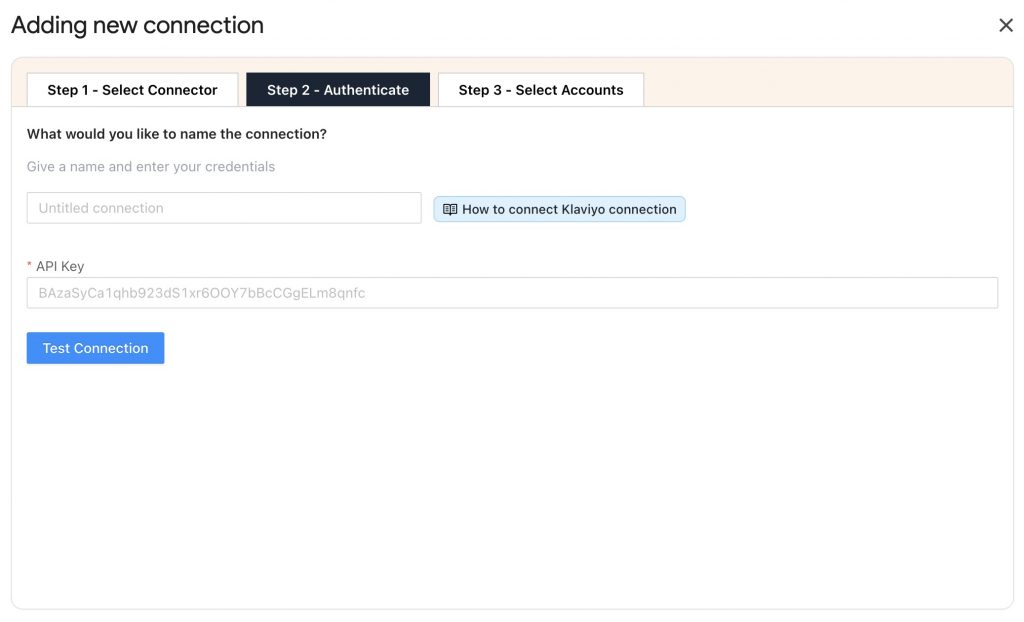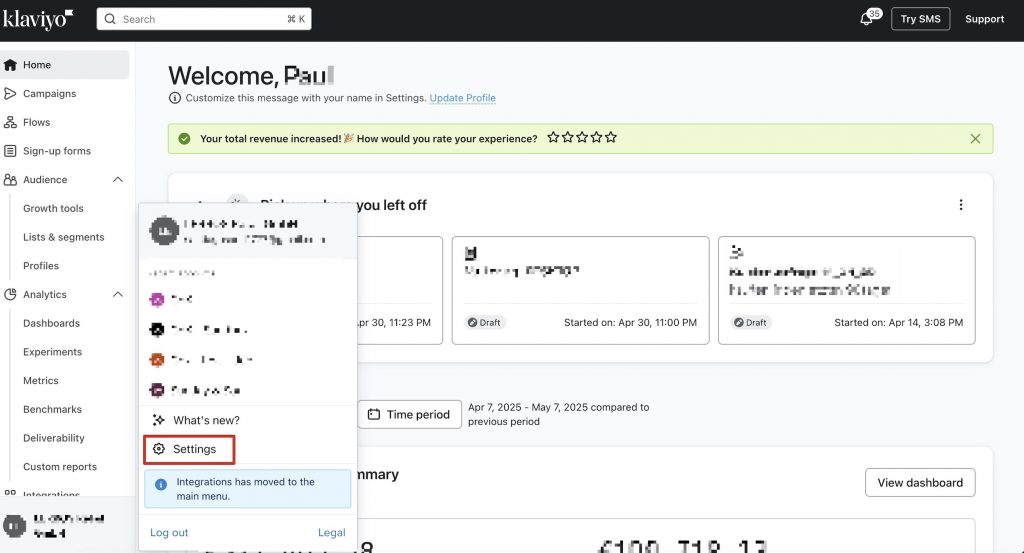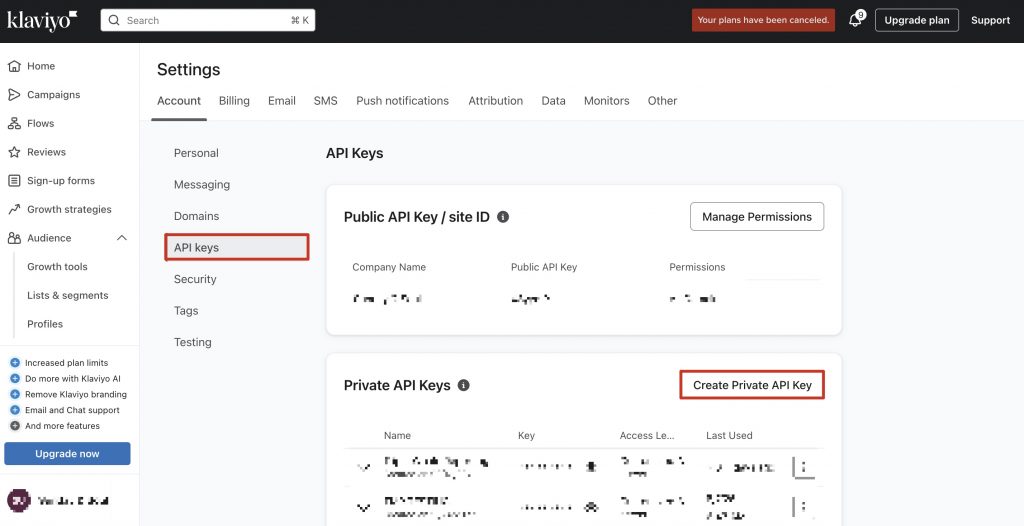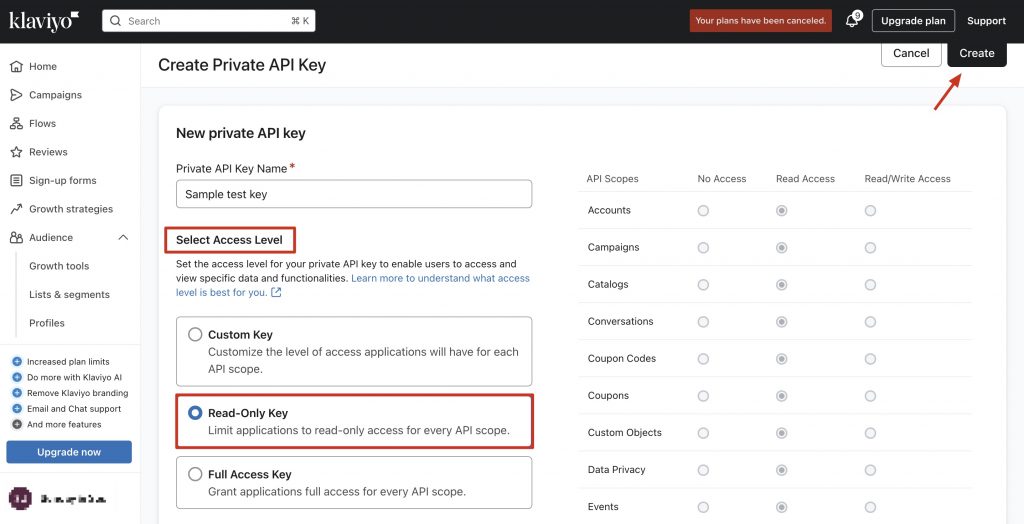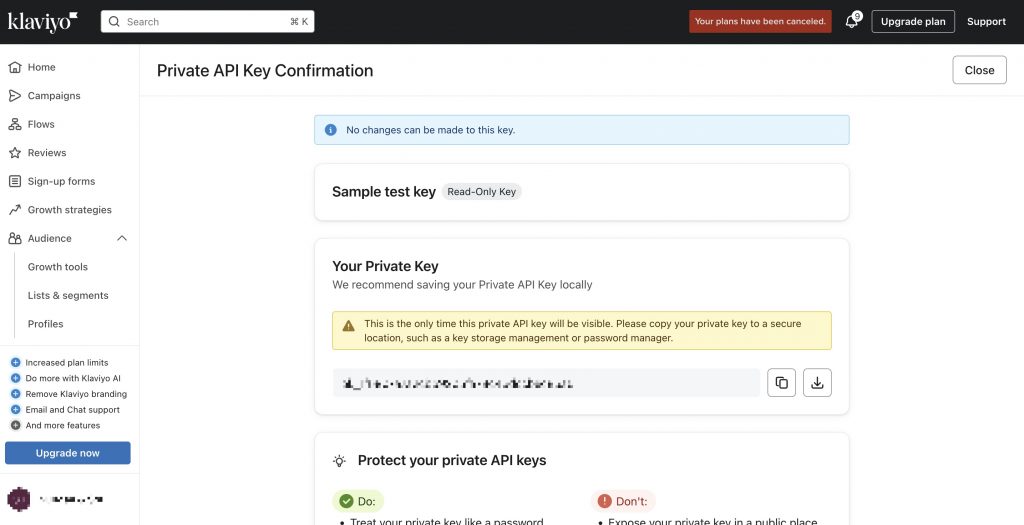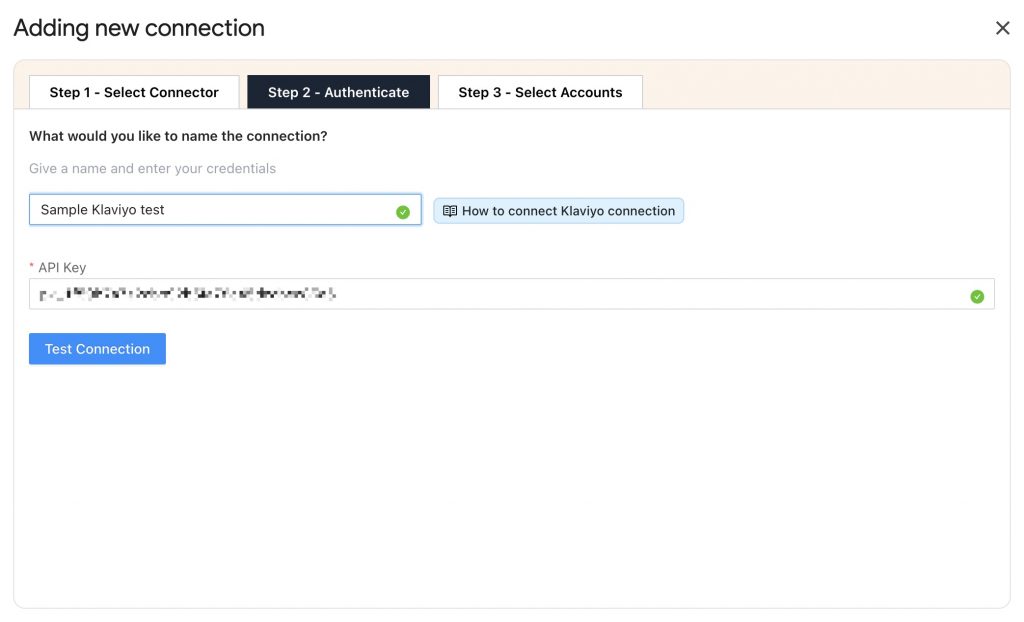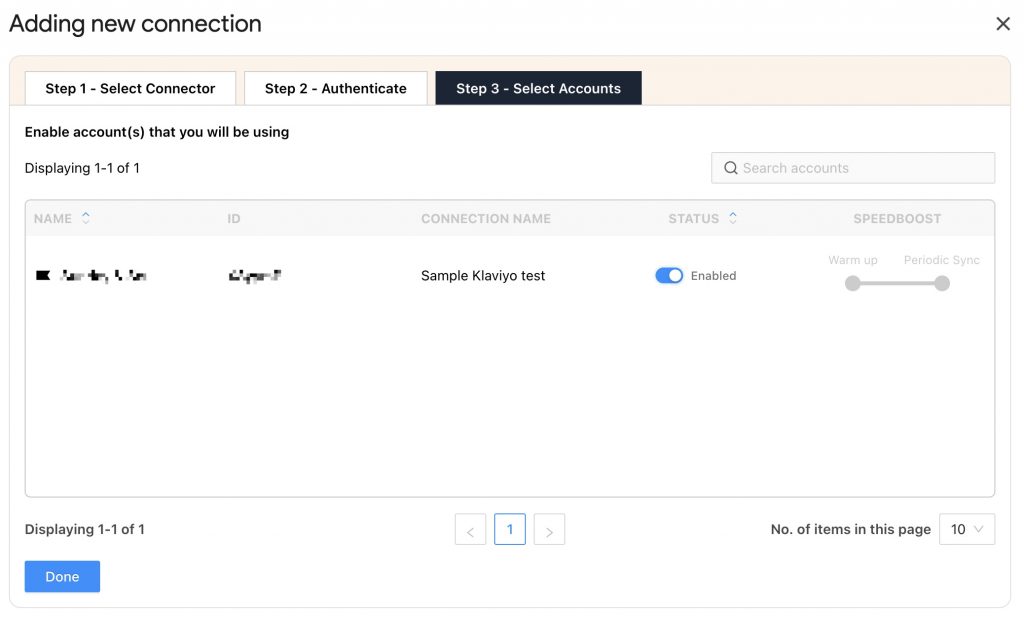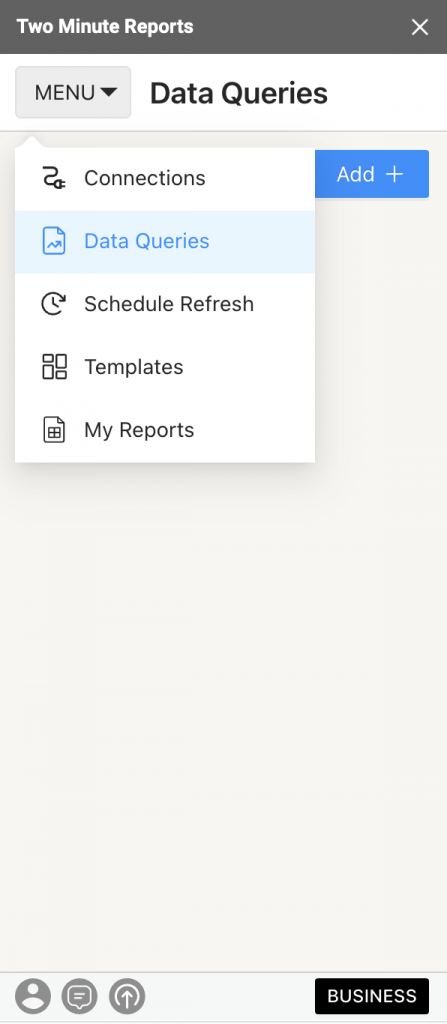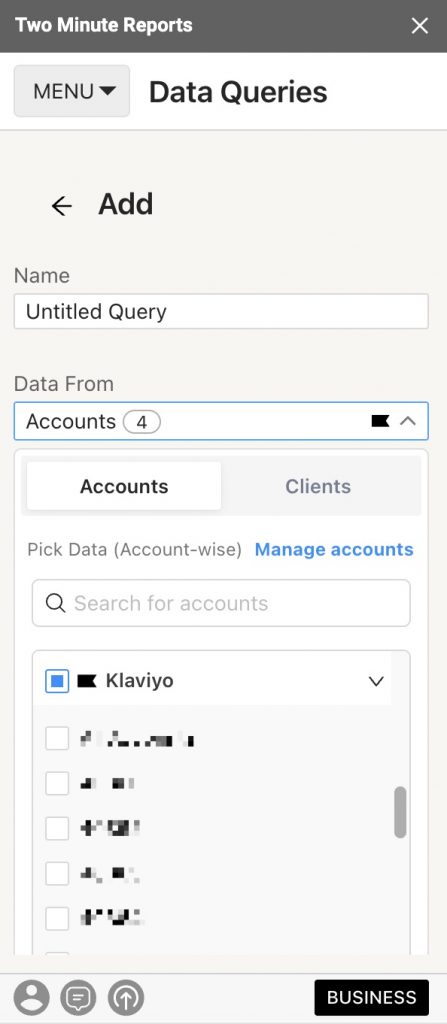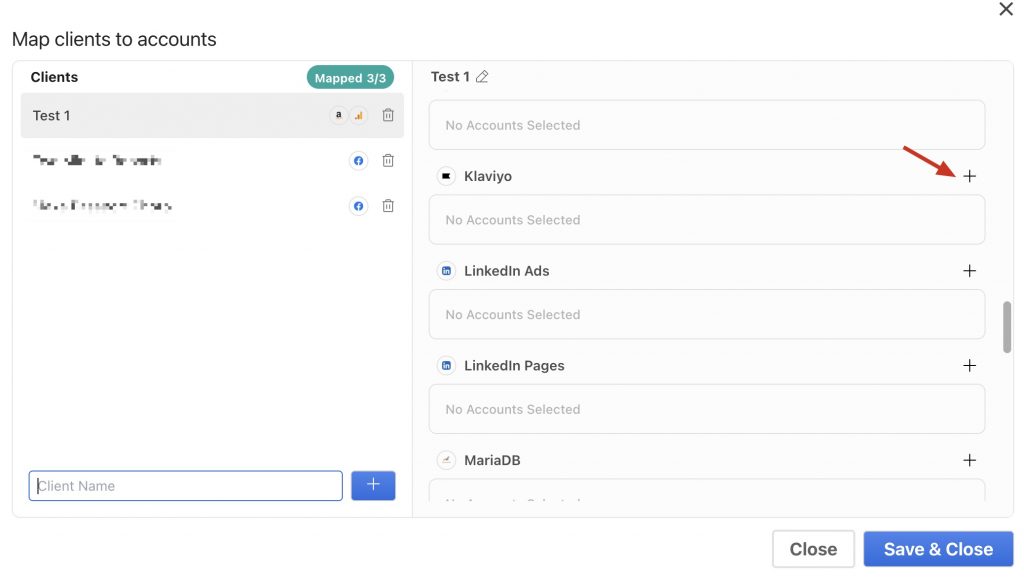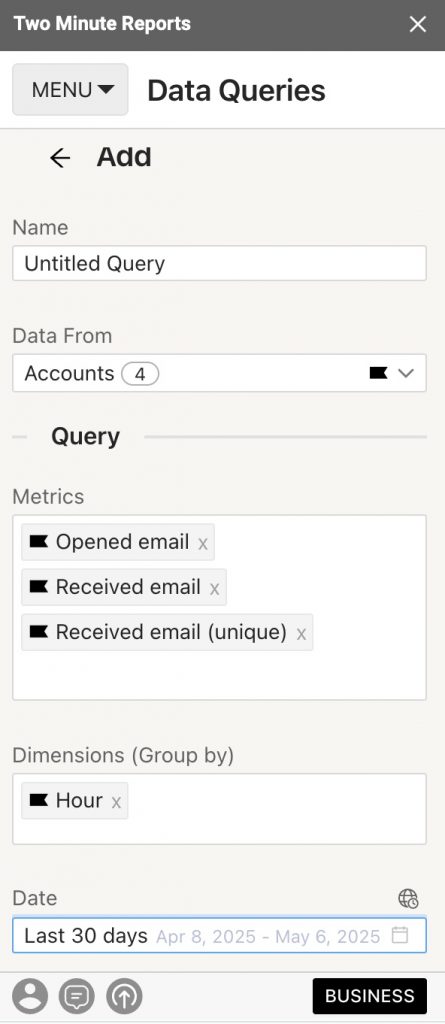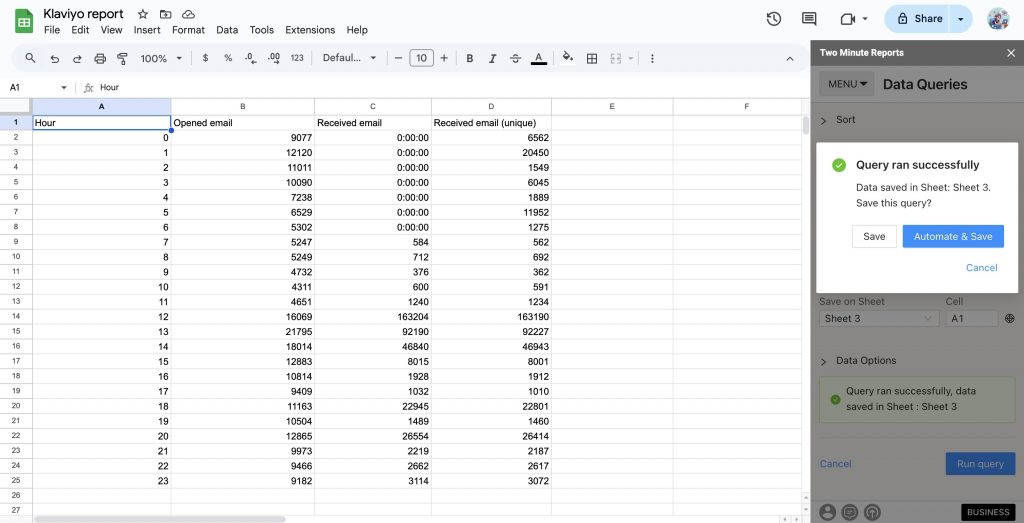Using TMR’s Klaviyo Connector, you can track email metrics, optimize campaign performance, and build data-driven reports directly from Google Sheets. Before connecting your Klaviyo data to Google Sheets, ensure you have the following permissions:
Required permissions
To connect with Two Minute Reports, your Klaviyo account must have one of these user roles: Admin, Owner, or Manager. You must also generate a private API key with read-only scope to connect your Klaviyo account data. Refer to Step 3 in the article. Keep your API key safe and secure to prevent loss.
Learn more about user management and privileges reference from Klaviyo’s help article.
Once you confirm these prerequisites, follow the steps to connect your Klaviyo data to Google Sheets through TMR.
Step 1: Install and Launch Two Minute Reports
Begin by installing TMR in Google Sheets using this step-by-step tutorial: How to install TMR in Google Sheets?
Once done, you can connect your LinkedIn Ads account to extract campaign data into Google Sheets.
Step 2: Create a new Connection to streamline the Klaviyo account
Click Menu at the top left of the sidebar to navigate to the Connections section. Next, click Add to create a new Connection.
When the “Adding New Connection” dialog box appears, complete the following three key steps to access your Klaviyo accounts:
- Selecting the Klaviyo Connector
- Authentication
- Enabling respective accounts with Klaviyo Connector
Choose the Klaviyo Connector from the list. Then, authorize the connection by entering the API key from your Klaviyo dashboard. Next, let us see how to generate the API key.
Step 3: Generate the API key from the Klaviyo dashboard
- In your Klaviyo dashboard, select the Profile option below. Next, choose the settings option.
- Now, choose the API keys under the account menu.
- You can view the previously created API Keys. To create a new API key, click Create Private API Key.
- Now, create a name for your new API Key. Under Select Access Level, you can select Read Access (granting read-only access for API scopes).
- Once you’ve completed this, click Create in the top right corner of the Klaviyo dashboard. Klaviyo will now generate your API key.
- Copy and paste the API key into the Step 2 – Authenticate section.
Note: Your private key will be visible only once. To prevent loss, save/download it in a secure place.
- Paste the API key as shown above, and click Test Connection. Your Klaviyo Connection will now be successfully authenticated.
- Once you’ve successfully authenticated, you’ll see a screen displaying your Account name, ID, Connection name, and Status as shown below:
- Enable the toggle for the accounts for which you want to run queries. Please note that you cannot extract data from the disabled accounts.
| Once you’ve enabled the associated accounts, you can hit “Refresh Connections” to ensure the connected accounts are reflected in the TMR sidebar. |
And that’s it. You can now extract your email marketing KPIs in Google Sheets to gain actionable campaign insights.
Step 4: Fetch Klaviyo data in Google Sheets
To extract specific email marketing campaign data, you must create a new query by navigating to the Data Queries section.
- Click Add and choose the respective Klaviyo accounts to analyze.
- You can manage multiple Klaviyo client accounts under one roof. Simply select one or more accounts to measure campaign insights.
- Alternatively, navigate to the Clients section. Add your client and map their corresponding Klaviyo account.
- Click on “Manage Clients” and map the necessary account details. Once done, click “Save & Close” to save your client’s details for future reference.
- Next, choose the relevant Klaviyo metrics and dimensions that align with your campaign goals. Then, pick the date range to track your campaign performance over a specific period.
- Configure your data reporting by selecting relevant fields and choosing whether to sort them in ascending or descending order. You can also apply custom filters to display only the information that matters.
Once you finish the above steps, click Run Query to visualize the output.
Now, you can use different Google Sheet features, such as pivot tables and VLOOKUP(), to extract critical insights and build charts to visualize your email marketing campaigns.
| Pro TMR Tip: Run all your queries directly from the Extensions menu on your Google Sheets. Go to Extensions > Two Minute Reports > choose your desired quick action. |
Step 4: (Optional) Get automatic data updates via Schedule Refresh
Once you create a report in Google Sheets, you can schedule automatic updates to get real-time data. This feature is convenient for sending emails or refreshing your spreadsheets with live data and using them as a dashboard.
Under the email section, you can enter the recipient’s email ID and save the new schedule.
You can also choose to specify the reporting format. You can insert the sheet content in the email body, attach the selected sheet as a PDF or Excel, or attach the spreadsheet as an Excel file.
Two Minute Reports’ Schedule Refresh feature has further capabilities. Continue reading about this feature: “How to Refresh Data Automatically in Google Sheets.”
We hope you found this guide helpful. If you have any questions, please contact our support team at support@twominutereports.com.
